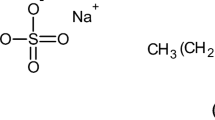Abstract:
The dispersion state of sodium-sulphonated polystyrene ( NaPSS) star-branched polyelectrolytes was investigated in salt-free aqueous solutions, by use of the small-angle X-ray scattering technique. With respect to polystyrene (PS) star-branched polymers of identical functionality, the ordering phenomenon occurring in the neighborhood of the overlap concentration c* is reinforced and observed in a larger range of concentrations. Moreover, the degree of order is no longer maximum at c* and is improved as the concentration decreases. The dispersion state is then mainly controlled by the electrostatic interaction. A crystalline order should therefore be achieved with stars of lower functionality, provided the electrostatic interaction is added to the osmotic repulsion. On the other hand, unusual scattering patterns are measured for aqueous solutions of NaPSS star polyelectrolytes. Indeed, a diffuse scattering is revealed at high angles, in addition to the regular diffraction rings related to preferred interstar distances. It is similar to the broad scattering peak produced by semidilute solutions of NaPSS linear polyelectrolytes and associated to the electrostatic correlation hole within the isotropic model. In the dilute regime (c < c *), it is just an intramolecular characteristic and represents the electrostatic repulsion between arms belonging to the same star. In the semidilute regime (c > c *), it also reflects the electrostatic repulsion between arms of distinct stars. So, as the concentration increases, it is mainly caused by the interpenetration of NaPSS stars. Such an observation is in agreement with the composite structure earlier proposed by Daoud and Cotton for star semidilute solutions. For c > c *, NaPSS star aqueous solutions can therefore be pictured as effective stars immersed in a matrix formed by the overlap of the arm ends. With respect to the dilute regime, the effective stars are smaller; the higher the concentration the smaller the size.
Similar content being viewed by others
Author information
Authors and Affiliations
Additional information
Received 14 May 1999 and Received in final form 15 March 2000
Rights and permissions
About this article
Cite this article
Heinrich, M., Rawiso, M., Zilliox, J. et al. Small-angle X-ray scattering from salt-free solutions of star-branched polyelectrolytes. Eur. Phys. J. E 4, 131–142 (2001). https://doi.org/10.1007/s101890170122
Issue Date:
DOI: https://doi.org/10.1007/s101890170122




